
MARTIALFORCE.COM
PRESENTS
AN INTERVIEW WITH
JOHN MULLIN SENSEI
DEC / 2005

SENSEI- MORE THAN JUST A WORD
Written and Edited by Lydia Alicea
Interviewed by William Rivera Shihan
Martialforce.com Online Magazine
Visualize yourself attending a karate tournament. It is jammed packed with martial artists, filled to the brim with a multitude of high rankers, Masters, Grand-Masters, Shihan, Hanshi, everything is here folks!
Suddenly, silence descends upon the floor. All eyes turn towards one direction, watching as he steps onto the floor. A resounding “Osu Sensei” is heard.
Hello and welcome, I am Lydia Alicea, Executive Editor for Martialforce.com
The above story was a real experience shared with my daughters, Rachel and Miranda in New York City. While riding the ferry back to Staten Island, I asked them if there was a specific moment that stood out. Quickly Rachel grabs my arm and answers, “Mom it was awesome how everyone together turned and said, “Osu Sensei”, Wow, Powerful!”
On a Sunday morning, preparing to leave from the administrative office of the WTKO, we stood and said “Osu Sensei” to the subject of this article. Rachel acknowledged “It”, she said, “Wow, Powerful”.
The “It” (feeling, essence) is the being of “Sensei” which goes beyond a literal definition. Many martial art instructors call themselves Sensei. That is great, but being of sensei must be carefully considered because it is more than just a word. Its definition is deeply rooted in Japanese tradition and culture representing the highest form of honor bestowed upon a teacher.
The paths taken define a Sensei; his intensity should nurture his students’ development in the same way. To consider the true being of Sensei we felt it would be valuable to write about one. It is the reason for this interview.
John Mullin is the essence of being Sensei; He has traveled many paths during his forty-five years of Shotokan Karate. They have brought him to several important and critical junctures in his life. The results of which, at the very least (and he will gracefully deny this) have made him a legend in Karate, and to his much-deserved credit, a positive force in uniting and strengthening Shotokan Karate here in the United States and around the World.
Our interview is not just the story of a martial artist, his beginnings, experiences and growth. It will demonstrate why being John Mullin Sensei is truly an ongoing evolution while raising the bar even higher as exemplified through the WTKO: An organization, which is effectively redirecting the course of Karate with its open approach to membership, dialogue, and firm adherence to the fundamentals of tradition, discipline and hard-core training.
In 2001, John Mullin co-founded the World Traditional Karate Organization (WTKO) with a number of senior JKA instructors. He is currently its Executive Chairman. In 1994, he founded the JKA Karate in Staten Island, New York, and was named “Instructor of the Year” by the Karate Voice. He is an A-Class Examiner, Judge and Senior Instructor for the WTKO. As a contributing author, he has written numerous publications on Karate produced by Long Island University.
For Mullin Sensei it is the appreciation for the humility of the art that he loves and its simplicity.
“A Sensei never stops learning, never stops growing.”
John Mullin Sensei
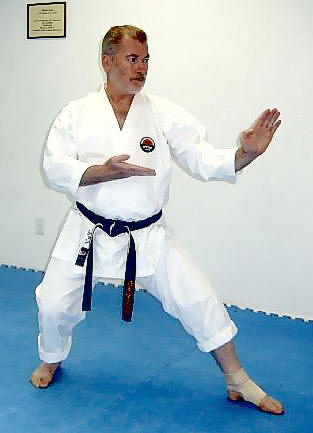
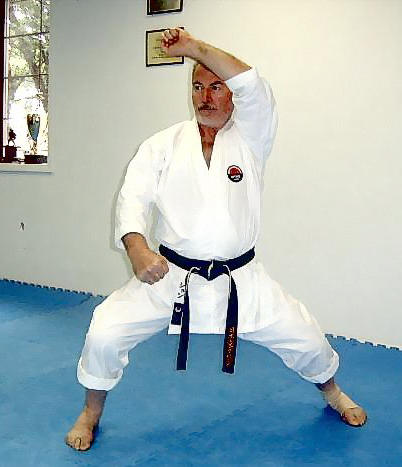
John Mullin Sensei was born in New York City. His father was a chief petty officer in the British Royal Navy, who at the end of WW II moved his young family to his home in Liverpool, England. Ten years later, they returned to the US and settled in Carnarsie, Brooklyn where Mrs. Mullin’s family lived.
Martialforce.com: How did you become interested in the Martial Arts?”
JOHN MULLIN: “As a young boy I was fascinated by the martial arts. I was an avid reader of comic books and began seeing Judo and Jujitsu in the comics. One day I noticed an ad for a book on Jujitsu. I later bought the book and from then, I was hooked.
I began karate training while in high school at about 15. My first instructor was Maynard Miner Sensei. Once I began training, I knew it was what I wanted to do. It was pure circumstance that it was JKA Shotokan. I later bought a book on karate by Nishiyama and Brown that drove the hook even deeper. A few years later, I met and trained under Sensei Nishiyama and Okazaki. They were my idols. I still have that book plus two additional copies which hold special meaning to me.”
Martialforce.com: “How long did you train with Maynard Miner? Whom did you later train with?”
JOHN MULLIN: “I trained with Sensei Miner for about 7 years. I was his first black belt. Sensei Miner was with Okazaki and later with Mori in the early 1970's. Some of my earlier dojo brothers were Tony Archibald, Lee Ireland, Ronnie Johnson and John Quevas.
While studying at Queens College, I began training with a friend, Bob Shapoff, at Mori Sensei dojo. I gravitated to Mori’s dojo and eventually stopped training at Miner’s dojo. I continue to hold Maynard Miner Sensei in the highest respect. He is a brilliant karate man.
Mori was Mori and his training had a slightly different flavor. I wanted more of that Japanese influence. This was perhaps my first turning point. Mori revolutionized my karate understanding and he was mesmerizing. He was an incredible fighter, with an intensity that demanded maximum effort of everyone. I remember him marching up and down the dojo floor with his shinai in hand. One mistake and you paid for it with pain, that shinai in Mori Sensei hand was a great teacher. Mori Sensei had a way about him where he really made everyone better.”
Martialforce.com: “Tell us about the tournaments you competed in as you were coming up.”
JOHN MULLIN: “My first was a dojo tournament as a Green Belt. I took 1st place in kata and kumite. During the next ten years, I could not buy a trophy. One rare moment was when I competed in the East Coast Championships in Philadelphia and took 3rd place in kumite. For the most part, I did not do well for a long while.
Something clicked around the age of 35, perhaps maturity kicked in. Every JKA tournament, I placed in the top 3 in either kata or kumite, sometimes both. I moved forward competing in the nationals on a regular basis. In 1980, I went to the World Championship in Germany. It was a major tournament and I was on the American team for kumite and kata. We did not win but I came back with a finalist medal.”
Martialforce.com: “During the “Mori” years, did you feel that at some point going to Japan was inevitable? A step in your progression?”
JOHN MULLIN: “I never really thought about it that way. I always wanted to go to Japan so one day I decided to plan it and voila, I went to Japan. I never told Mori I was going I just went. When I called him from Japan to tell him I was there, he just growled at me. I wanted to compete in the Shoto Cup because Tanaka Sensei invited me to compete, so I called Mori Sensei to ask his permission.
He said no. I guess it was a blessing in disguise because Tanaka Sensei said if I got permission I could train in the instructor class. I was a little green and had no idea what that would have meant but I was soon to learn that it would have been very rough in deed if not a little dangerous. Foreigners were used pretty much as punching bags plus I was not in my twenties I was already 40.”
Martialforce.com:“When did you go to Japan?”
JOHN MULLIN: “I first went to Japan in 1985 and later returned in the summer of 1987.”
Martialforce.com:“You decided to go there for what purpose?”
JOHN MULLIN: “I went there basically to train. I wanted to get that Japanese experience and clear the mystery once and for all. Here in the United States you see the great ones, the elite instructors who travel worldwide. In Japan on the dojo floor, it is quite a different picture. It is brutal training.
I trained at two dojo, Kanazawa Sensei's dojo, but most of my training was centered around the JKA Headquarters, the Honbu Dojo in Ebisu.”
Martialforce.com:“What was your immediate impression about the training?”
JOHN MULLIN: “My first impression, I was going in slow motion and everyone else was on super speed. It took me about 2 months to adjust and start to find my place in the dojo. You had to adjust quickly because the weeks were filled with a lot of kumite. It was defend yourself at all cost and you had to be able to get on the floor and survive. The training was intense but the mystery slowly began to evaporate.
It was awesome to see Japanese martial artists training on the floor who were just ordinary people and took their licks like everyone else. The elite instructors were phenomenal and true professionals who did this for a living. These instructors were selected as the best of the best from their college graduating classes and were later broken down in the instructors’ course. Three years of being brutalized and in the end, you will know how to take it. You become very effective from nonstop training and competition. That period of time training in Japan was actually the 2nd turning point in my life.”
Martialforce.com: “From the training you received in Japan, was there that much of a difference compared to your training in the U.S.?”
JOHN MULLIN: “There were differences in training for what we were doing. First, stances were slightly higher. While I was training under Mori Sensei, the stances were very low, in fact so low that I could not move as fast as the others could on the floor. I had to adjust my stance to allow my body to move faster and it worked. It was not standing up straight of course but still a good front stance.
Second, there was the focus on speed to allow quicker body movements, and the third change was the simplicity of the training. Nothing complicated just simple basics. The basics are repetitive for a reason so it gets you to the depth and breath of the technique, and it becomes an intricate part of the way you move.
I remember a class being taught by Kurasako Sensei, an amazing instructor. He said to the class, “Heian Shodan.” We did it and finished. He said again and we repeated 10 times to a count. Then he said no count then one more time as he made minute corrections then we did it about ten times. Then he said, “Ok, begin and every time you come to yame, begin again until I tell you to stop.” With 30 minutes left, that was all we did. Heian Shodan. That is simplicity. I have to tell you, three days later I returned to the dojo, started Heian Shodan and I just exploded.
Many argue against this form of training. I feel that one needs to experience it to understand it. Another workout was to do a technique followed by 10 pushups. I have carried this into my own training, but I do not always teach my students this way because they crave variety. My Black Belts, they understand it. We will vary the training but the basics come first and always simple.”
Martialforce.com: ”When compared to the training you received here was it not quite the same level as the training in Japan?”
JOHN MULLIN: “It cannot be the same level because we are not professionals. We go to work everyday, 9 to 5. The senior instructors know the difference. They understand their karate and know how to use it. Not everyone can train like a professional because it is very difficult. Some people do make the sacrifice because they want to be at a world class level.”
John Mullin Sensei returned to the US from Japan with experience, development and growth that certainly changed his karate for himself and how he would instruct his students from this point. The intensity of his training has not changed.
In the late 1980’s Mullin would meet an exceptional martial artist from England, like himself, who would not only impact his karate, but also play an instrumental role in the new direction Mullin’s karate would take.
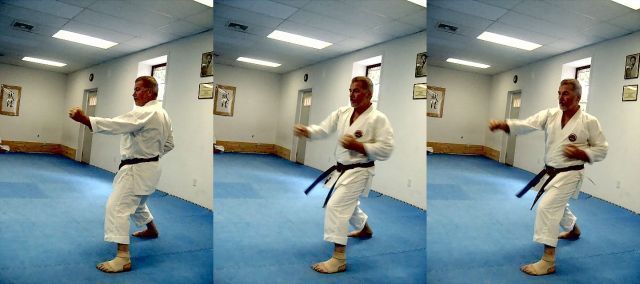
Martialforce.com: “Changing to a different direction. Richard Amos Sensei, how did you meet him?”
JOHN MULLIN: “It was back in the 1980's while training at Mori’s. One day I noticed this young, tall thin kid with his hair tied up in a topknot. I said to myself, “What’s he trying to pull?” Something about him rubbed me the wrong way. Back then I was a brash and cocky kind of a guy in the dojo, full of myself!
I was training 6 days a week, twice at Mori’s and 4 times at my dojo. One day Amos enters Mori’s dojo, walks up to me and asks, “Are you John Mullin?” “Yeah” I said. He introduced himself and says, “I hear you train in the morning. I’d like to train with you.” I told him sure and gave him the address to my dojo in Sheepshead Bay, Brooklyn. Well, he showed up and continued to, every morning at 6:30 AM.
I soon learned that Richard was truly a nice person and we became good friends. At some point, he expressed his thoughts on going to Japan to join the instructors’ course. This was years after I was in Japan. I told him he might be there 3 months, or at most, 5 years. Turned out he stayed 10 years. It was a boot camp, a real meat grinder, called by some, “The Hornet’s Nest”. Richard survived it.”
Martialforce.com: ”Someone like yourself who had made the sacrifice of training in Japan; didn’t you in a sense raise your level even higher?”
JOHN MULLIN: “I will answer that question with this explanation: After Japan I jumped into the groove of training hard, it has remained this way ever since. Richard left Japan, and went to Paris but wanted to move to New York City and open a dojo. Needing a place to stay I offered my home to Richard. At that time, he was with the Asai side JKA whom had split from the Nakahara side JKA.
Someone from Mori’s group, whom I will not name because I hold Mori in the highest esteem, told me I could not publish an interview I had just written on Richard Amos. This was considered a conflict because the group Amos belonged to was not JKA; regardless, I went ahead and published the interview.
“The conflicts, the politics reached an unacceptable level for me.”
In retrospect, it was the best thing that could have happened. It was my third turning point. Richard, a couple of senior guys from the JKA and myself joined forces and put together a plan creating what was to become known as the WTKO, a legitimate and traditional Shotokan-Karate organization. There were critical components to the development of WTKO, but certainly a major one was Richard Amos. Richard trained with some truly brilliant people (I called them the Young Turks). His karate is truly cutting edge.
With no disrespect to anyone, I have to say that once I started training with Richard and this core of incredible people, we raised the level of our karate. What I learned in the last four ½ years was more than what I had in the previous 10. I say that with humility and respect to Mori.
Richard Amos is a JKA instructor who came out of their training program and endured the blood baths. He is as good if not better than any JKA instructor on the planet. In essence that makes us a main line Japanese organization who advocates what the instructors’ program teaches.
I train about 5 days a week and one or two Sundays a month in the city with our core group. It is intense training and we analyze each other. As instructors we benefit and so does our organization.”
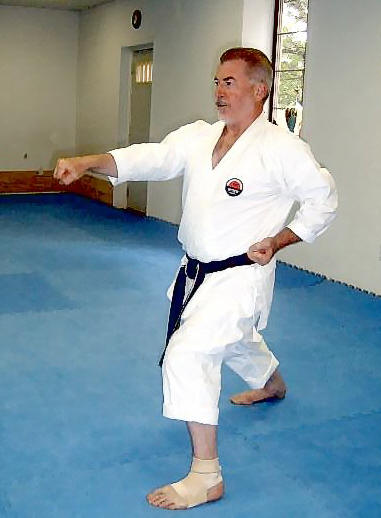

Martialforce.com: “You did describe yourself as a brash and cocky fellow in those early years. Were you one John Mullin outside and another on the dojo floor?”
JOHN MULLIN: “ Not really. On the dojo floor, I was courteous gentleman, but when it came to training or sparring, I always gave 100%. Yes, I was cocky but it was not out of conceit. I was driven by pride to give my best no matter the competition. I was never the “in your face” type that unfortunately we see a lot of today. I preferred a low-key assertive approach where your technique speaks for you. If during a competition I scored on an opponent, I NEVER pumped my fist in the air and danced around the ring. To me that has no place in karate.”
Martialforce.com: ”Sensei, for the student who is trying to work it out, what do you stress to him/her?”
JOHN MULLIN: ”Over the years I always stress to my students the importance of mastering the basics and to excel at them. The three principles: strong solid stance, posture, and explosive speed. Work at them and relax to allow yourself to move fast. Lastly, I teach them about the importance of total mental focus and concentration.”
Martialforce.com: “Can you describe the element(s) of Shotokan that appeals to you?”
JOHN MULLIN: “Shotokan has the combination of explosive power and speed combined with grace, fluid motion and precision of technique. I enjoy training in kata, the variety and challenges they present is endless. Of course sparring in all its varied forms though demanding is always exciting.”
Martialforce.com: ”You currently train in Aikido. How do the skills acquired through years of Shotokan prepare you for Aikido?”
JOHN MULLIN: “It gives you a better understanding of distance, timing and the importance of stance. I am also able to understand the body shifting much faster.”
Martialforce.com: ”How important is stance training?”
JOHN MULLIN: “It is very important because it establishes your foundation. Show me someone who does not understand stance and I will show you someone who is not very good. Stance establishes the principals of movement and develops the leg muscles required for karate training.”
Martialforce.com: ”Which instructors influenced you the most?”
JOHN MULLIN: “My first instructor, Maynard Miner Sensei, a fantastic karate man, and Mori Sensei, who gave me a sense of the Japanese feeling. The guys I trained with, like Bob Shapoff, Joe Gayol, and Richard Amos also influenced me. In Japan I was impressed with Kagawa, Tanaka and Kurasako.”
Martialforce.com: ”If you could change anything about Karate what would it be?”
JOHN MULLIN: “I would change all the stupid politics.”
“The WTKO presents the opportunity to improve your karate by training with some of the top martial artists in the world. We welcome any organization to come into our dojo and train regardless of rank or association”. John Mullin Sensei
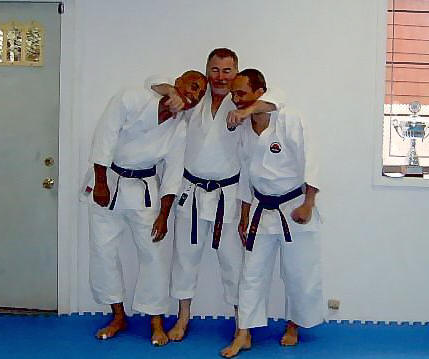

Martialforce.com: ”Why should an organization join the WTKO?”
JOHN MULLIN: “The WTKO presents the opportunity to improve your karate. It does not mean it must be in our dojo; we offer it along with the top people in this organization. If you come into our dojo to train, you can regardless of your rank or association. As long as you show manners, respect and discipline, we welcome you to train with us.
We do not recruit new members, individuals join dojos. A group can become a member and still maintain its own identity. You can join the WTKO in two ways, as an associate or as an affiliate. We travel to many countries and hold seminars and workshops.”
Martialforce.com: ”Bring us current on new developments with the WTKO.”
JOHN MULLIN: “Puerto Rico is seeing fantastic development. George Vasquez is the chief instructor and is really doing an incredible job on the island. He teaches great karate and looked fantastic when he recently visited New York for training. Our Romanian group is growing stronger as well as our affiliates in England.”
The WTKO is about a community of “like minds”. It saw a need and responded. There are brilliant karate people all over the world. Many of them are Shotokan people. Almost all Shotokan people at one time or another belonged to the JKA. The JKA split once and later, split again. Many members were disillusioned by the JKA and voiced their opinion that they were not satisfied with the instruction. I am not putting the Japanese down, maybe years ago it was different, but apparently, things have changed. In addition, there are groups who feel they have been ignored especially from the poorer countries. Their needs often go unrecognized.
The WTKO recognizes that there are many great, yet small karate organizations working by themselves, seriously dedicated and working hard, but their instruction is limited.
“The instructor needs to grow. Everybody needs a teacher. Every teacher needs a teacher.” John Mullin Sensei
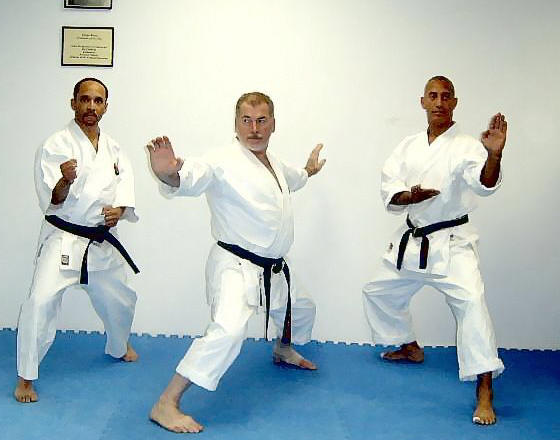
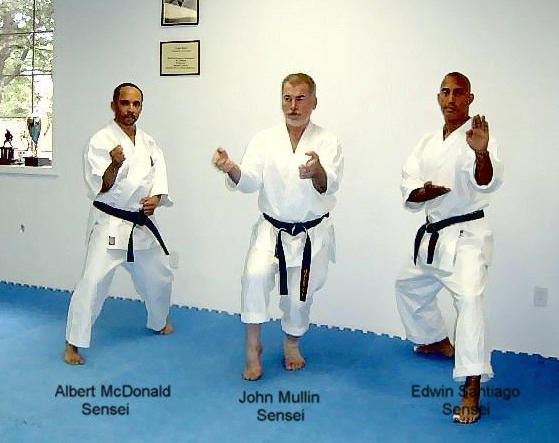
Our idea for the WTKO was for it to be a vehicle that could reach out to these groups and show them that there is an organization for them. Many groups have embraced this idea with enthusiasm and have come on-board. Though many are small, it does not matter. The important thing is they are no longer small. They are part of a worldwide organization, a family whose members can cross borders and train with one another. I mentioned earlier that we travel around the world and hold seminars. I recently held one in Spain. People from India, England, Pakistan, and Portugal attended. We had 300 people on the floor at this seminar. It was brilliant. These martial artists need that association and we provide them with support to grow while maintaining a line of communication that is always available.”
Martialforce.com: “How do you get people to work together?”
JOHN MULLIN: “The key is we work with people of “a like mind” What is unique about the WTKO, (more than other groups, especially the non-traditional) is that we train, always. While one instructor is teaching class, another is training on the floor. We do not stand on the sideline watching like there is a show.
Egos may have their place but not on the dojo floor. If you have a large one and you are a master, or a supreme grand master, or illustrious grand master and do not want to get on the floor, fine. We say that if people are serious about karate, they train. If I am a concert pianist, I play the piano, all the time. If I have not played in 20 years, I cannot call myself a pianist. The same idea applies to a karate man. If he cannot remember the last time he trained, guess what? He is not a karate man.
This is why the people we work with, who come on board are of a like mind. The individual with the huge ego cannot work with us because then there is no room for anyone else. When we take off our shoes, we leave them at the door with the egos inside. When I am training, I will ask a fellow instructor to point out if I am off on something and I will thank him.
On a previous comment made about anyone who is illustrious, supreme whatever, it was not to knock them. My point is that there are people who have trained for many years that are deserving of their titles because they have contributed something to the martial arts. The flip side is that there are also those who have not trained in 20 years, claiming to be what they are not. If you are not training but running a dojo, you are a businessperson, so say that you are a businessperson. You are not a karate man.”
Martialforce.com: “Sensei, your candor was great. Your closing thoughts for our readers.”
JOHN MULLIN: “For myself, I don’t like any title. To me the highest title anyone can call me is, Sensei, because I am a teacher. I am a teacher and a practitioner. When I trained with Nakayama Sensei in Japan, he was Sensei. The man is a legend and is simply, Sensei.
If Sensei does not mean enough, and you need a higher title, ask yourself: Why? Someone in Japan said that America is the land of many masters. Strangely, there are very few masters in Japan. When I went to Japan, the first day I watched them working out on the floor, my heart broke. These guys were brilliant and are all Sensei. Most do not compete anymore; most are retired from competition yet they still train like mad. They do not claim to be masters and yet they can run rings around most people. Each asked, “Call me Sensei, please.”
We here have lost our priorities. Forget the title. Do you need a bigger name for the Yellow Pages? A little humility goes a very long way.”
“I am a middle school teacher for the New York City Department of Education. In karate, I am an instructor. While I was in Japan, to make a living I taught English. To these students I was Sensei. It is an honor to teach others, to share your knowledge, to walk the path before someone else so that you can show them the way. It is the highest form of honor to a teacher.”
Martialforce.com: “Thank-you John Mullin Sensei.”
Note from William Rivera:
John Mullin Kyoshi, (yes he is, and he still wears his black belt) thank-you “From the Heart.” My thanks to Albert McDonald, his presence and performance on the dojo floor spoke volumes, and to Richard Amos and the WTKO whose spirit I was allowed to feel through John Mullin Sensei.
To contact the World Traditional Karate Organization:
WTKO-Staten Island
ADMINISTRATIVE HEADQUARTERS of the WTKO
Instructor:
John J. Mullin
521 Jewett Avenue Staten Island NY 10314il
Phone: (718) 815-5700 Email
jmullin@wtko.org
WTKO Honbu Dojo
WTKO
CHIEF INSTRUCTOR Richard
Amos
206 E63st between 2nd & 3rd Avenue. Phone: 212 207 1907
Email:
richardamos@wtko.org
Call for Information